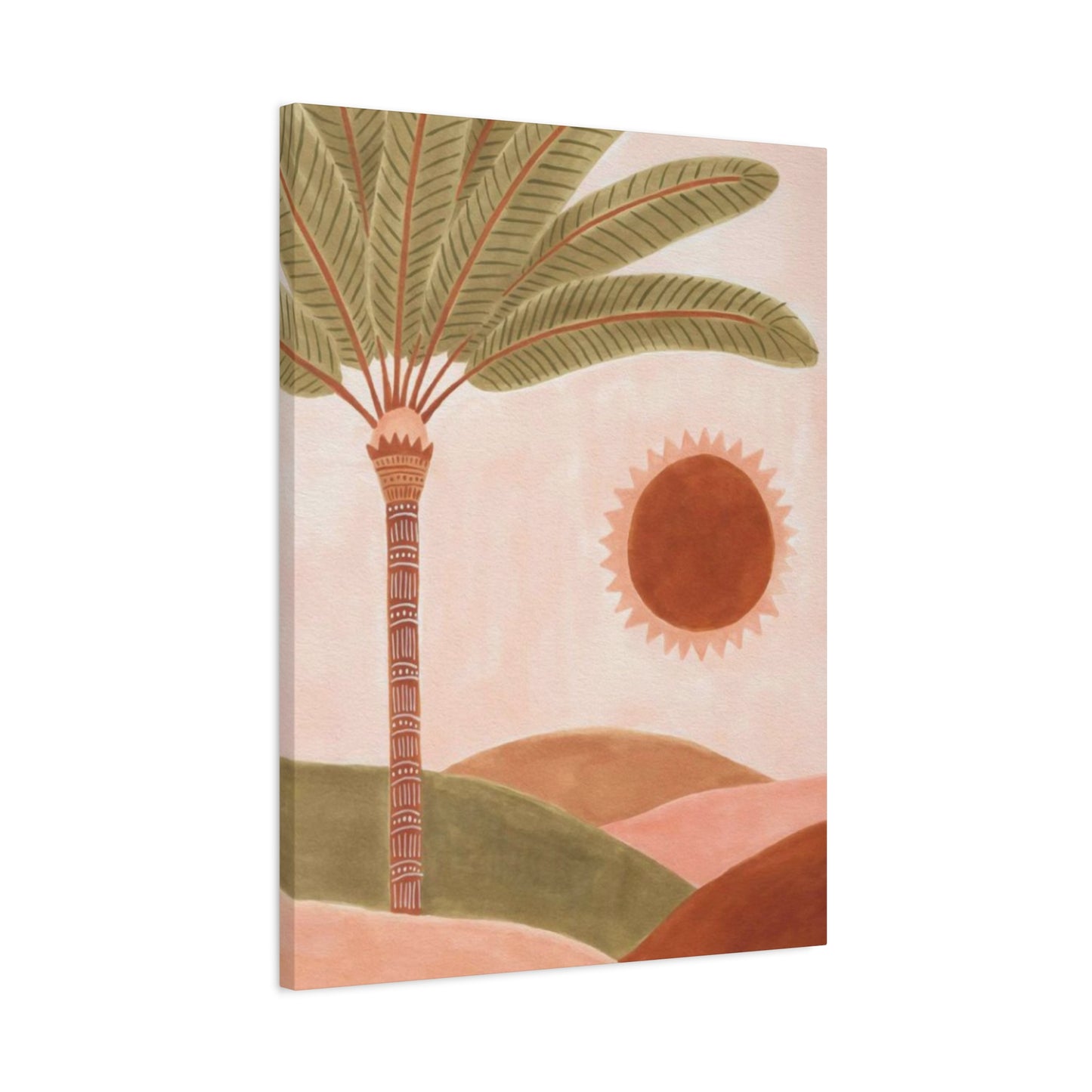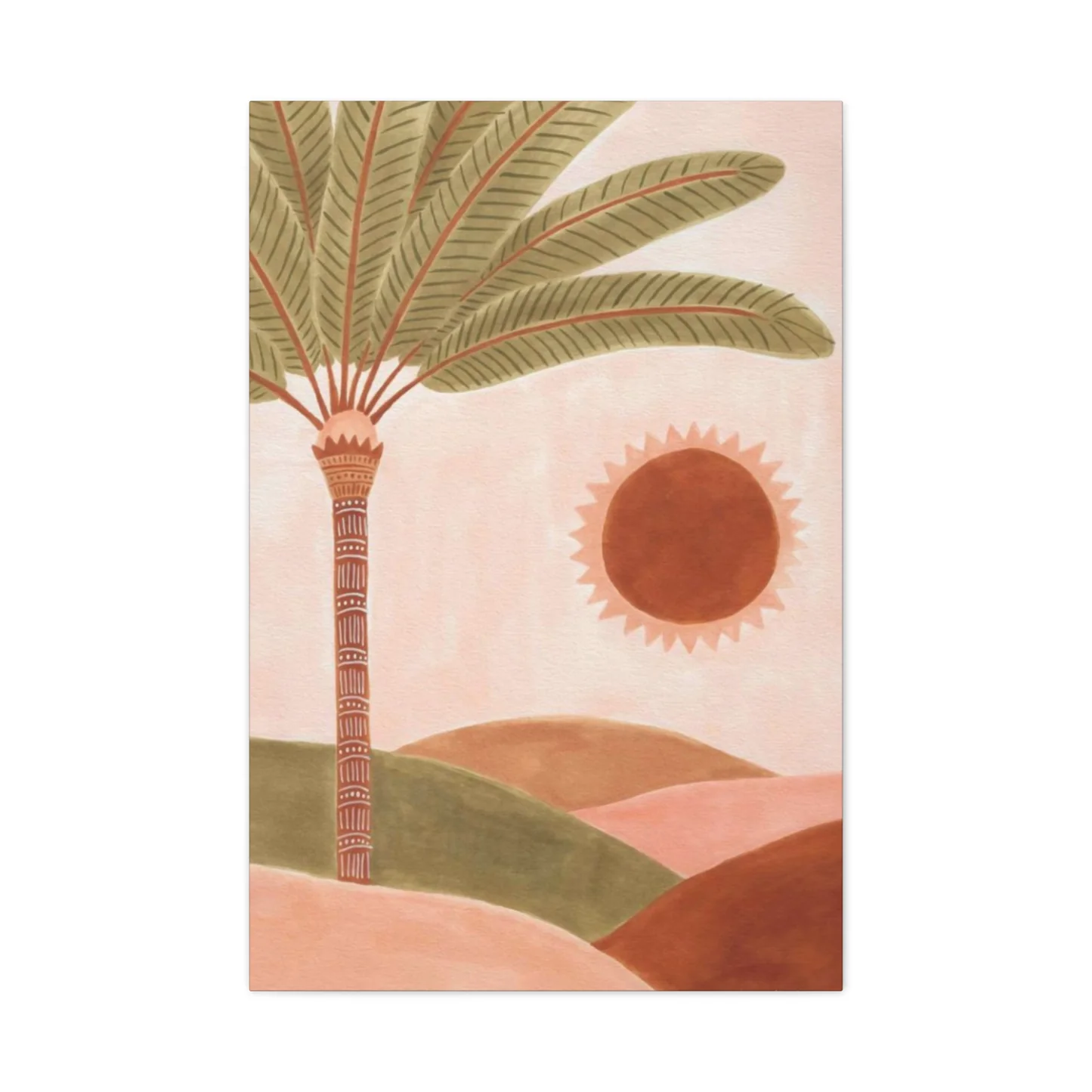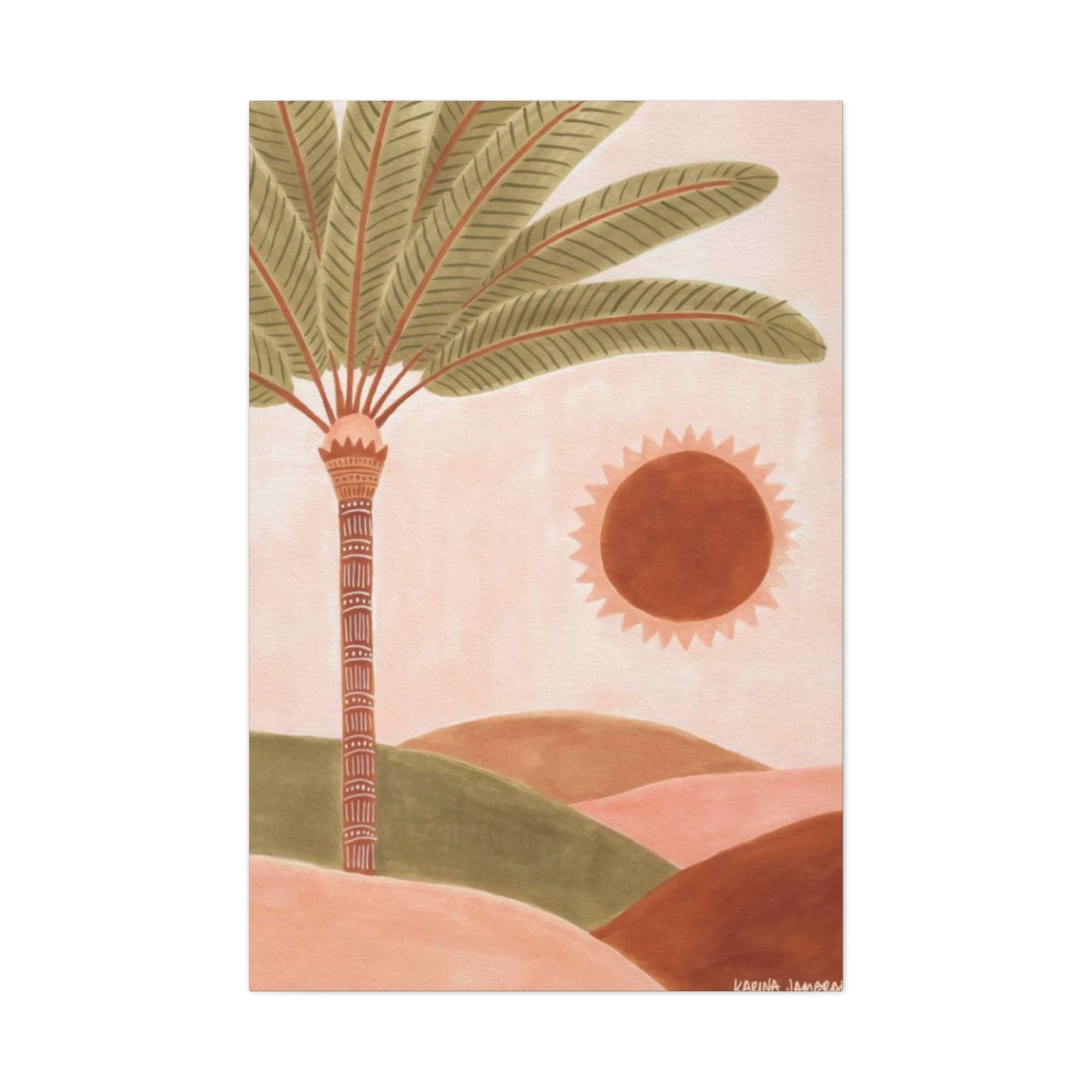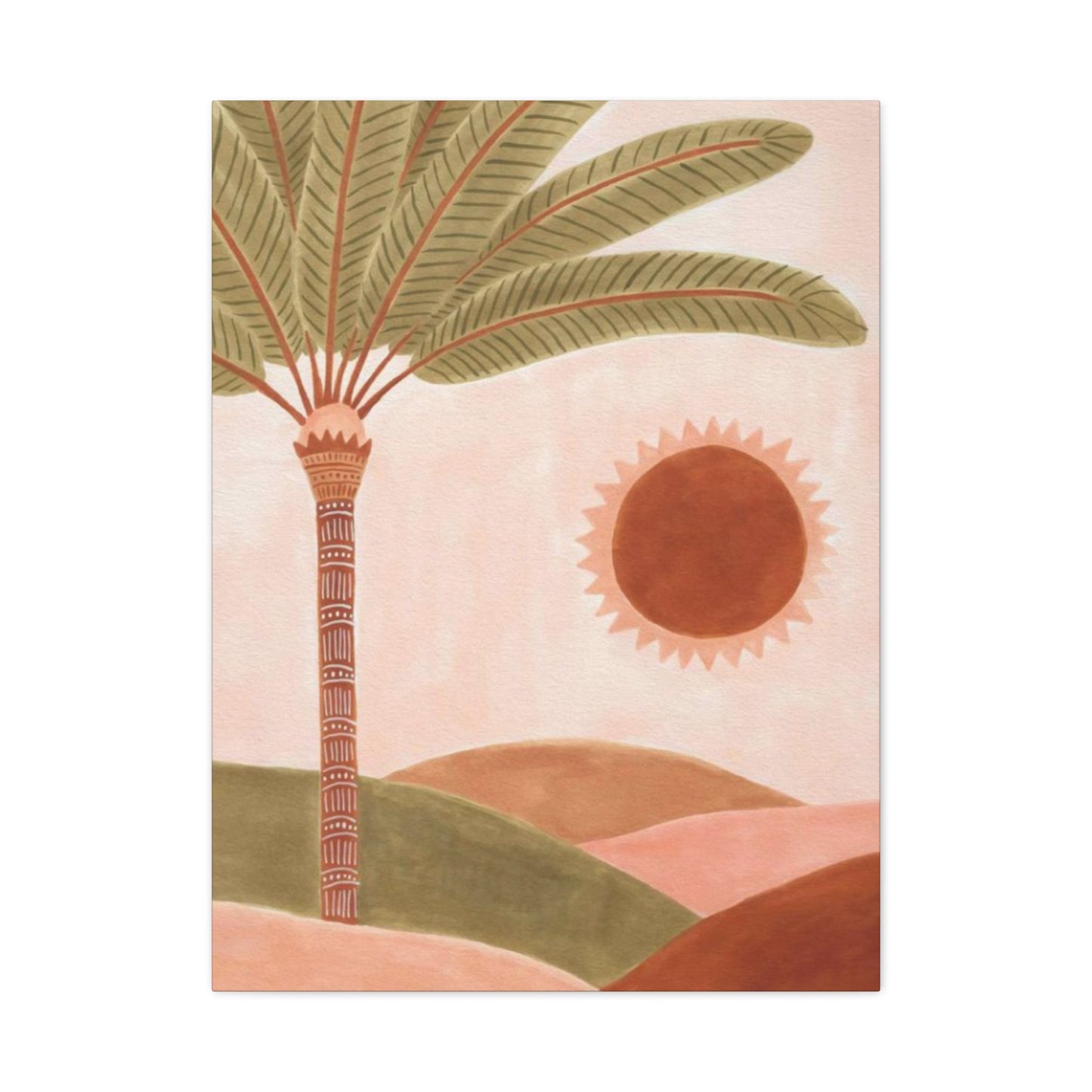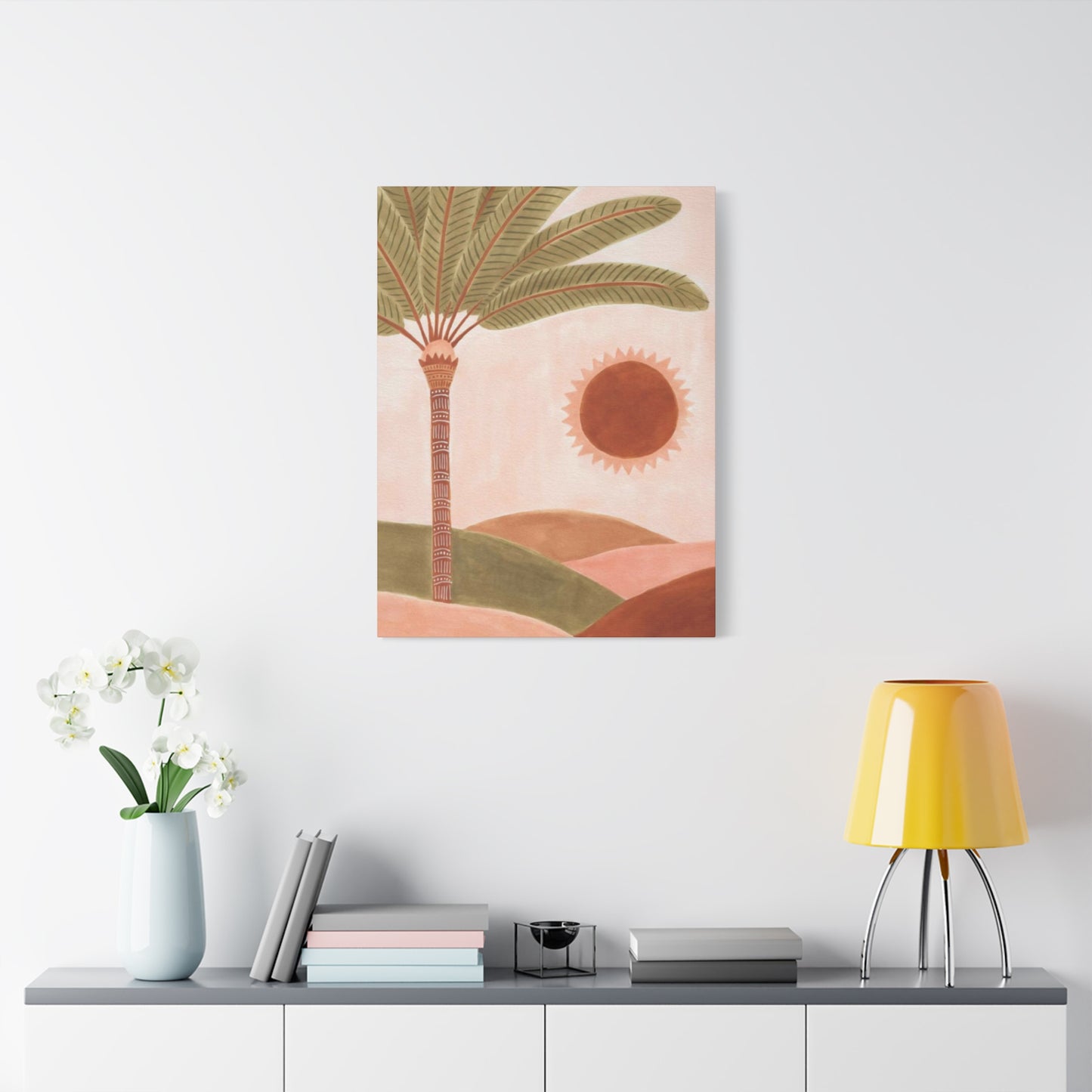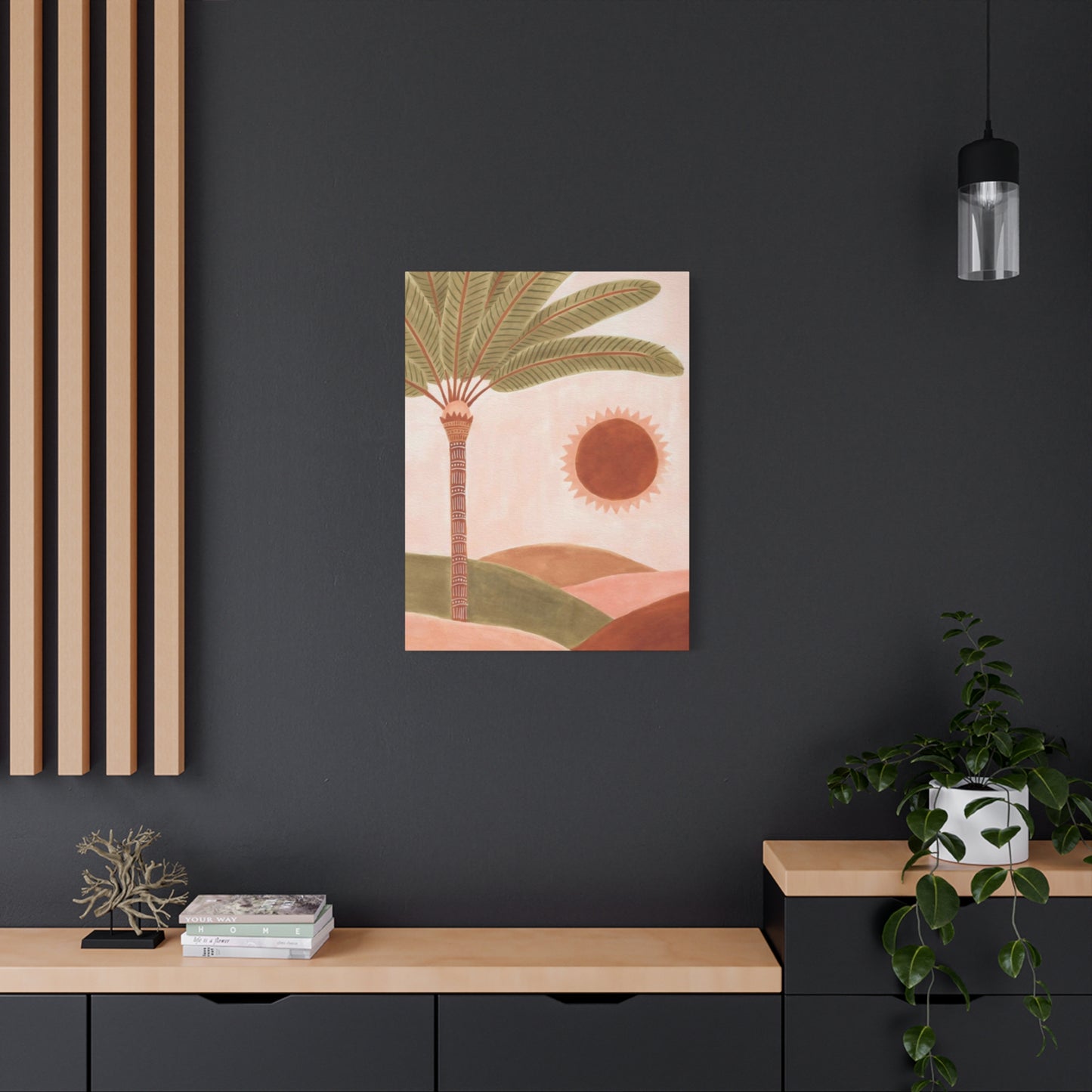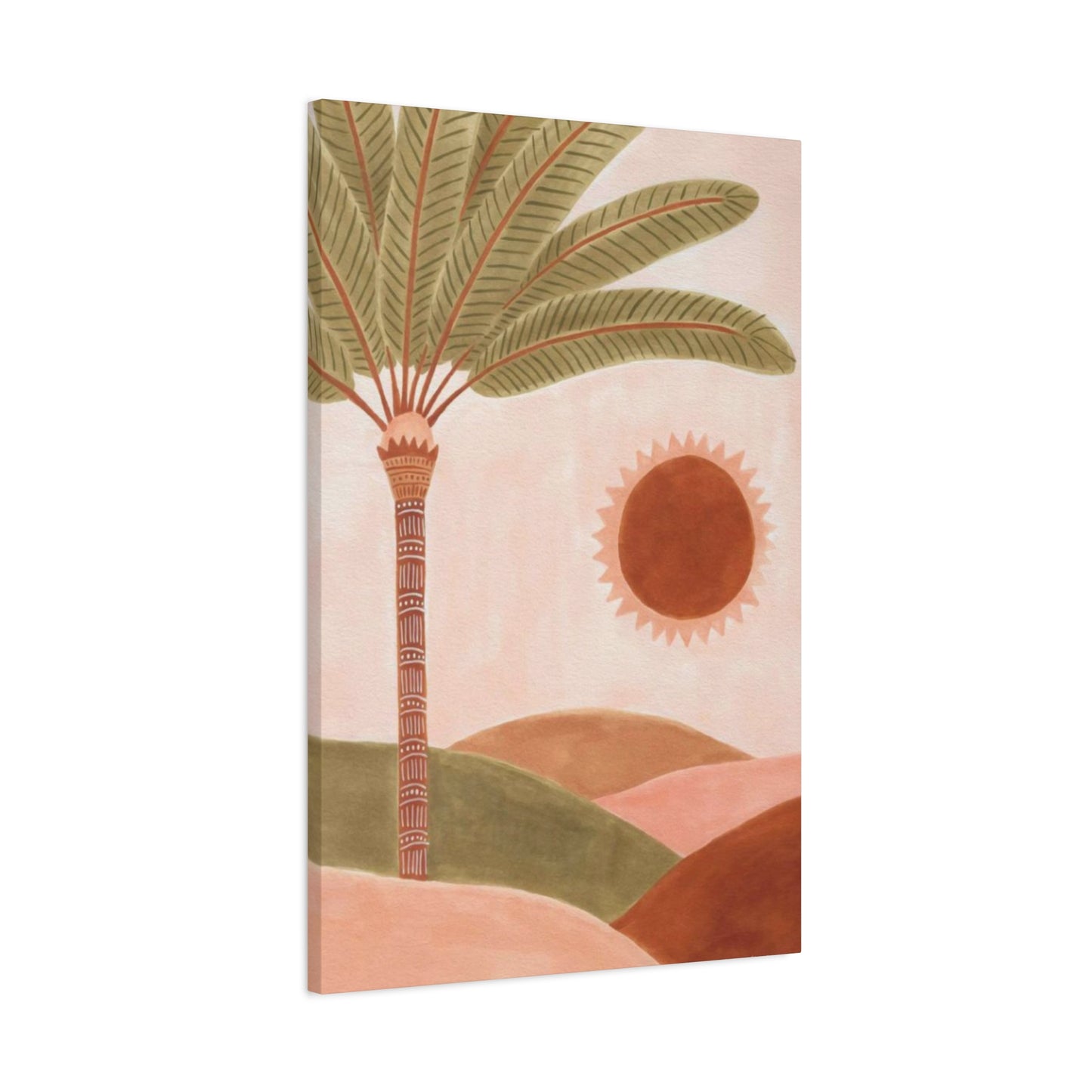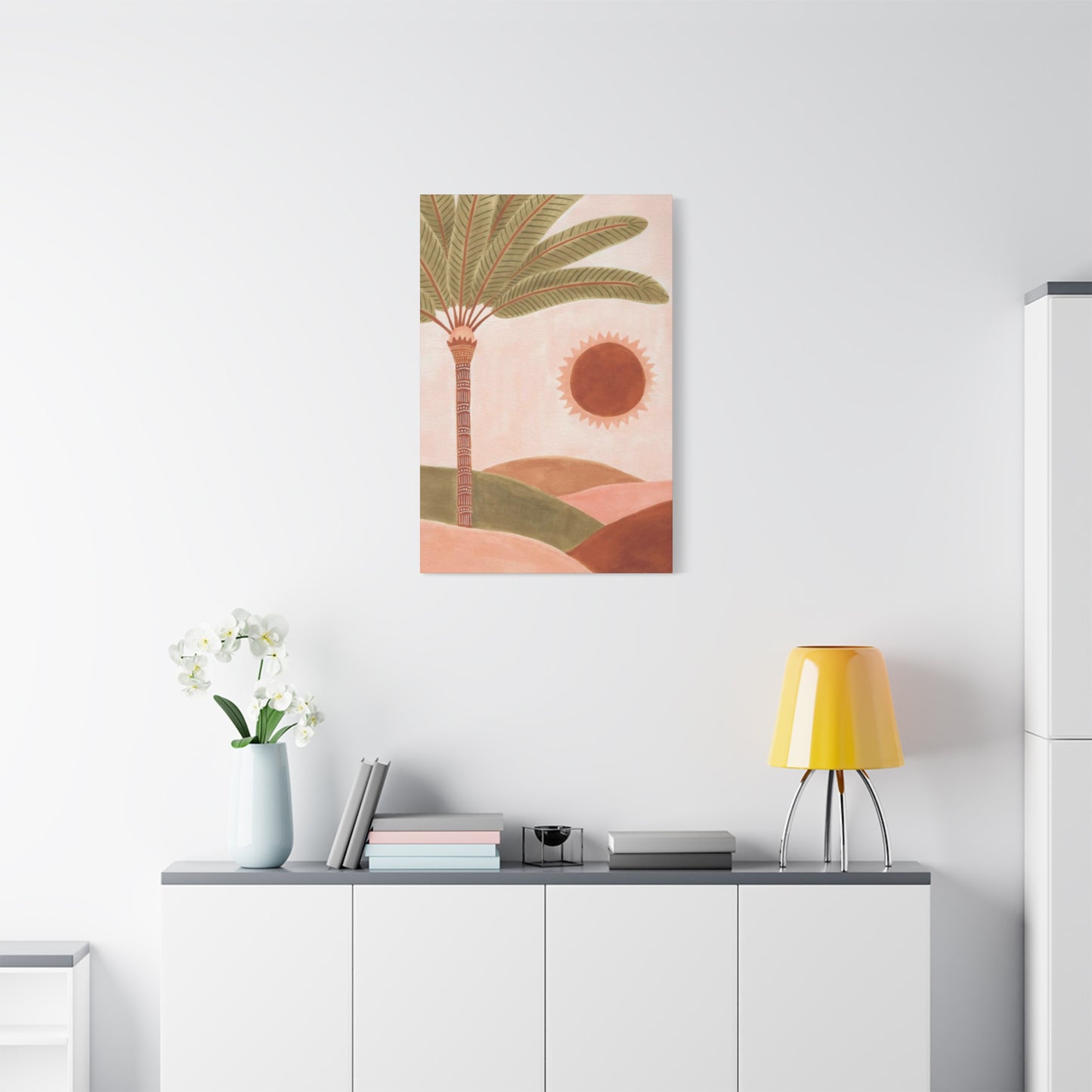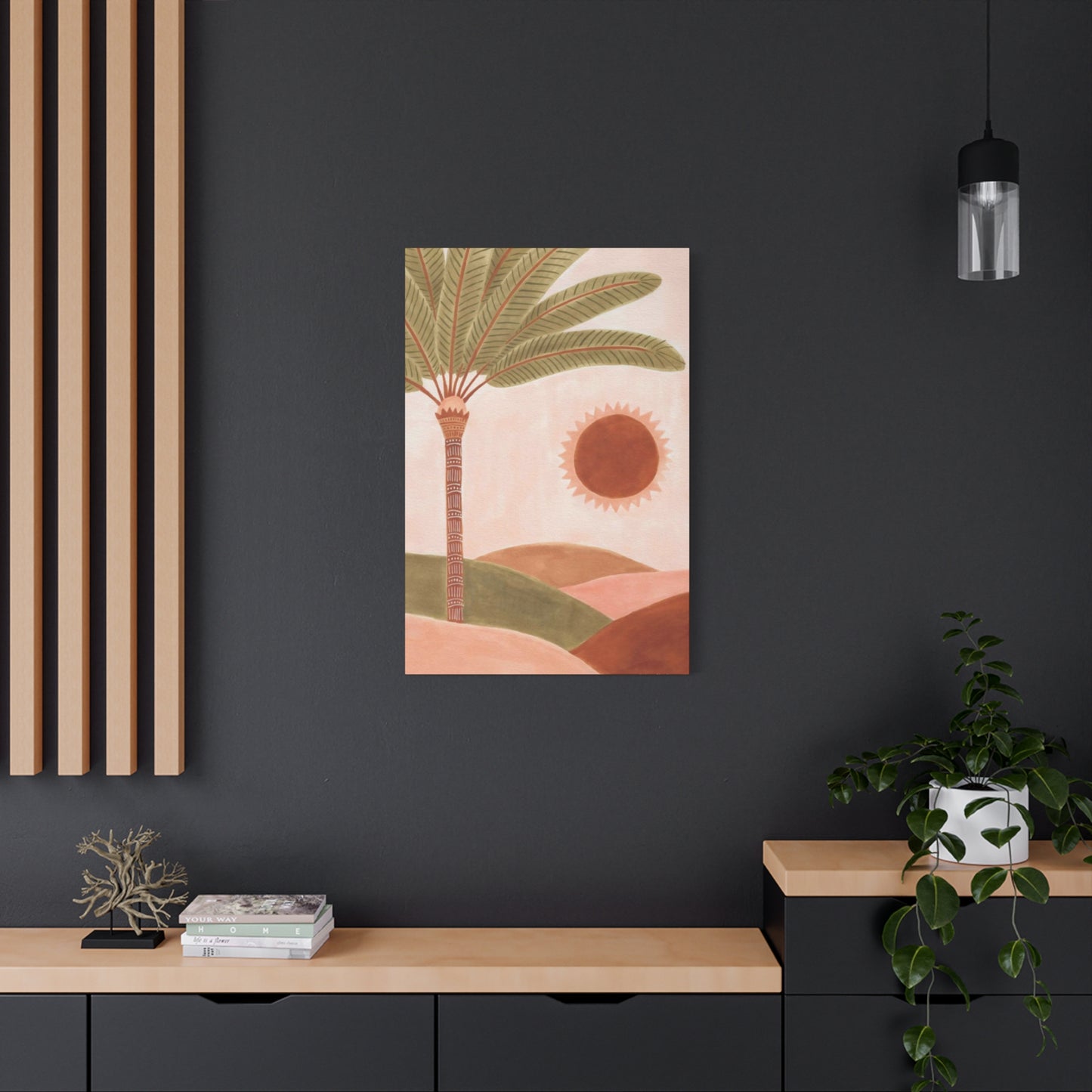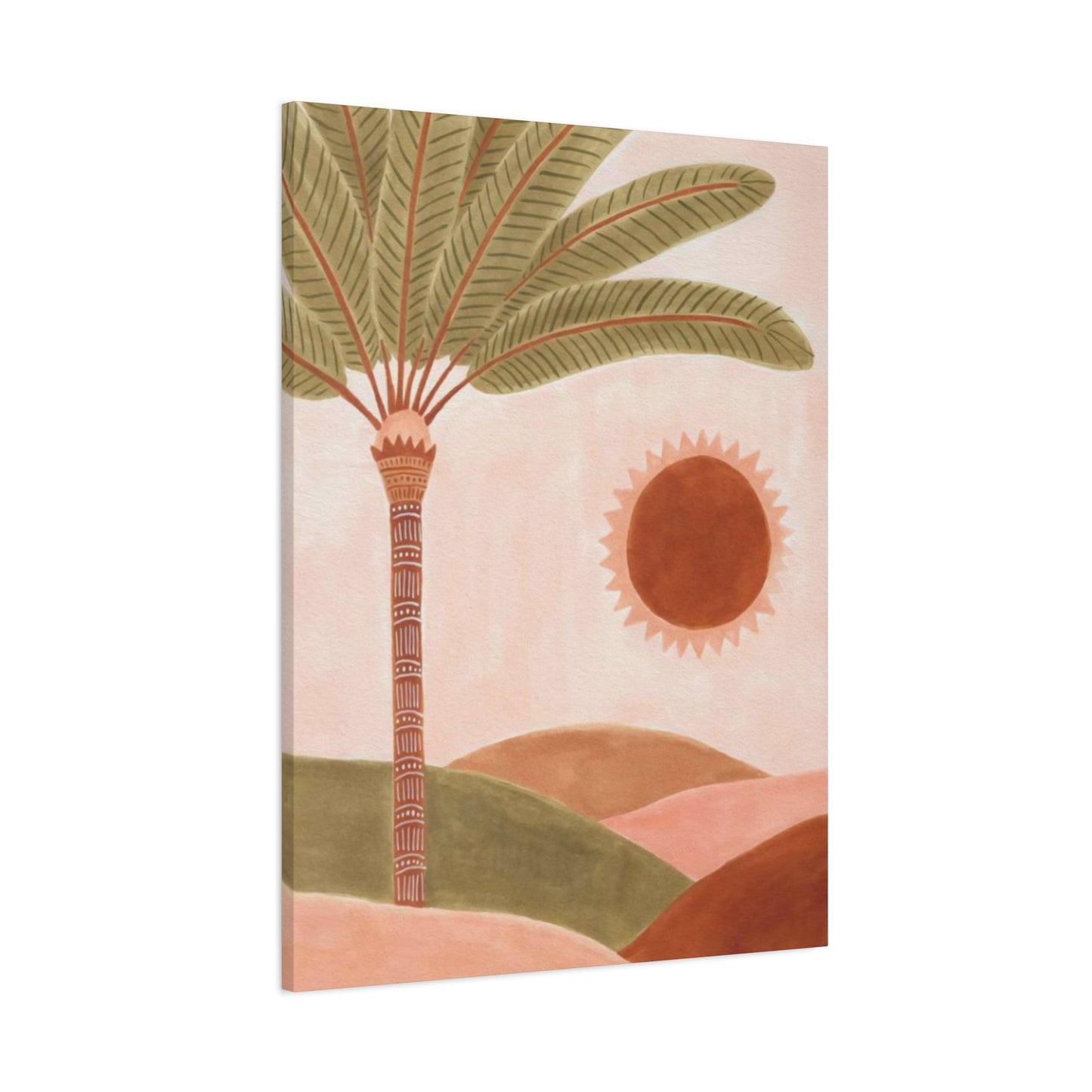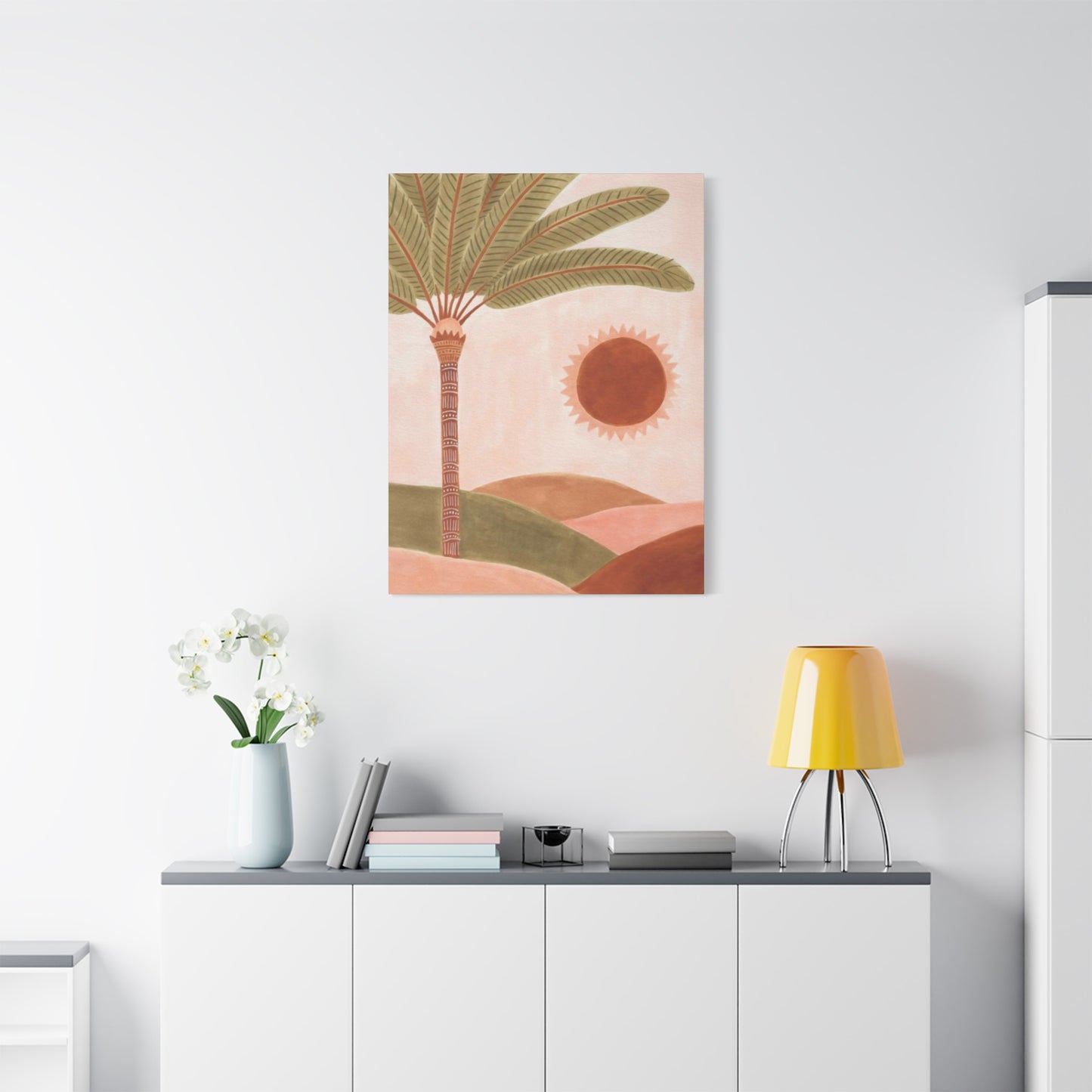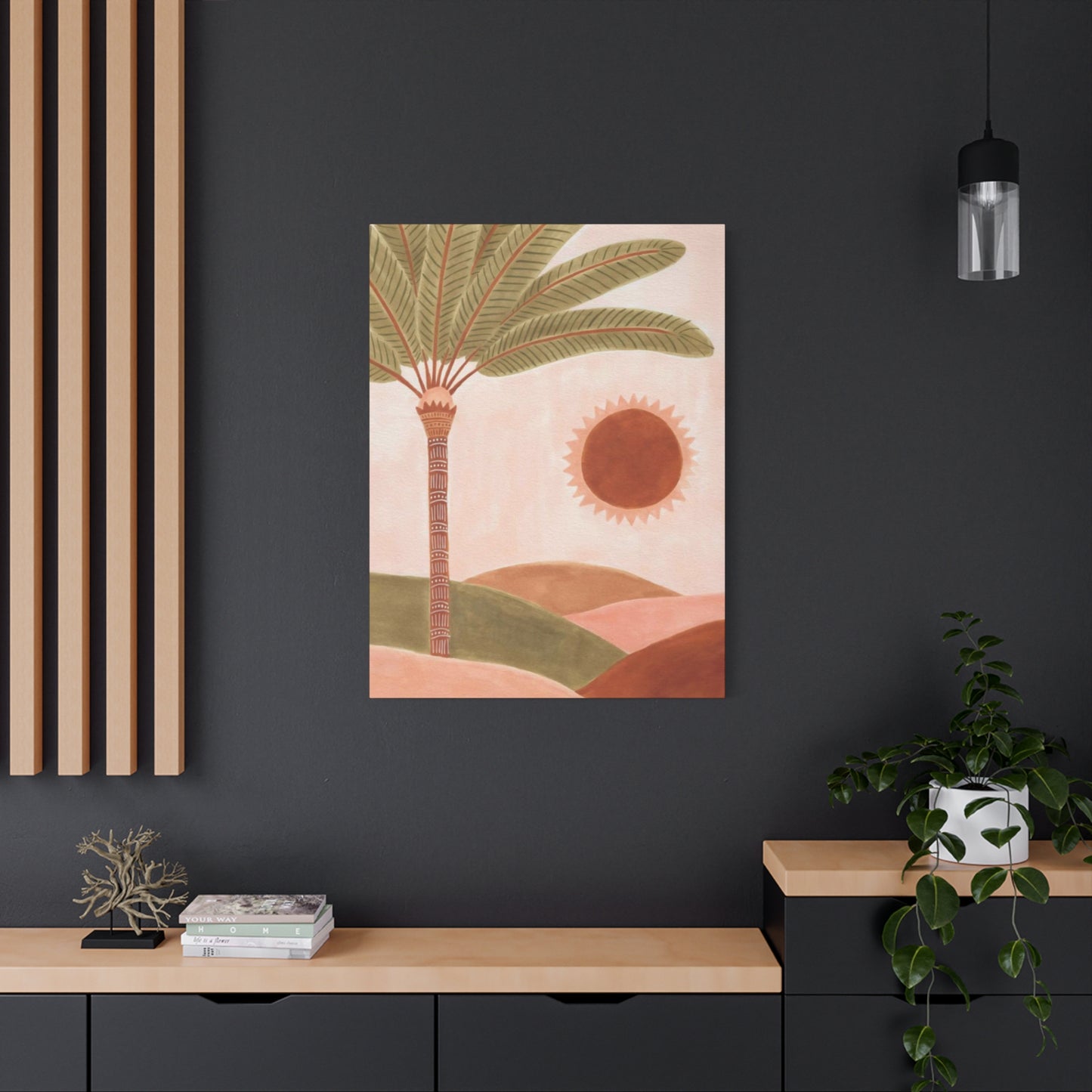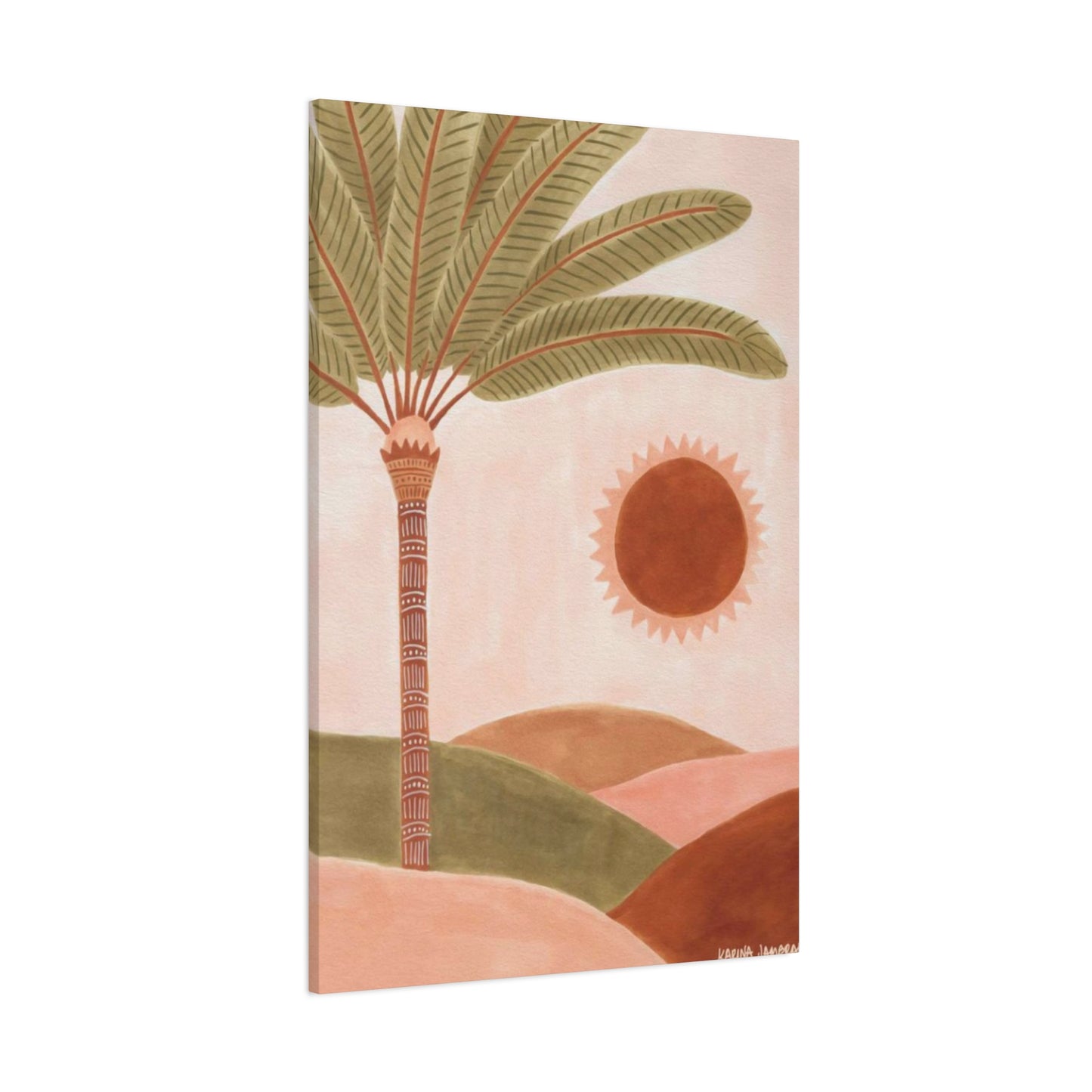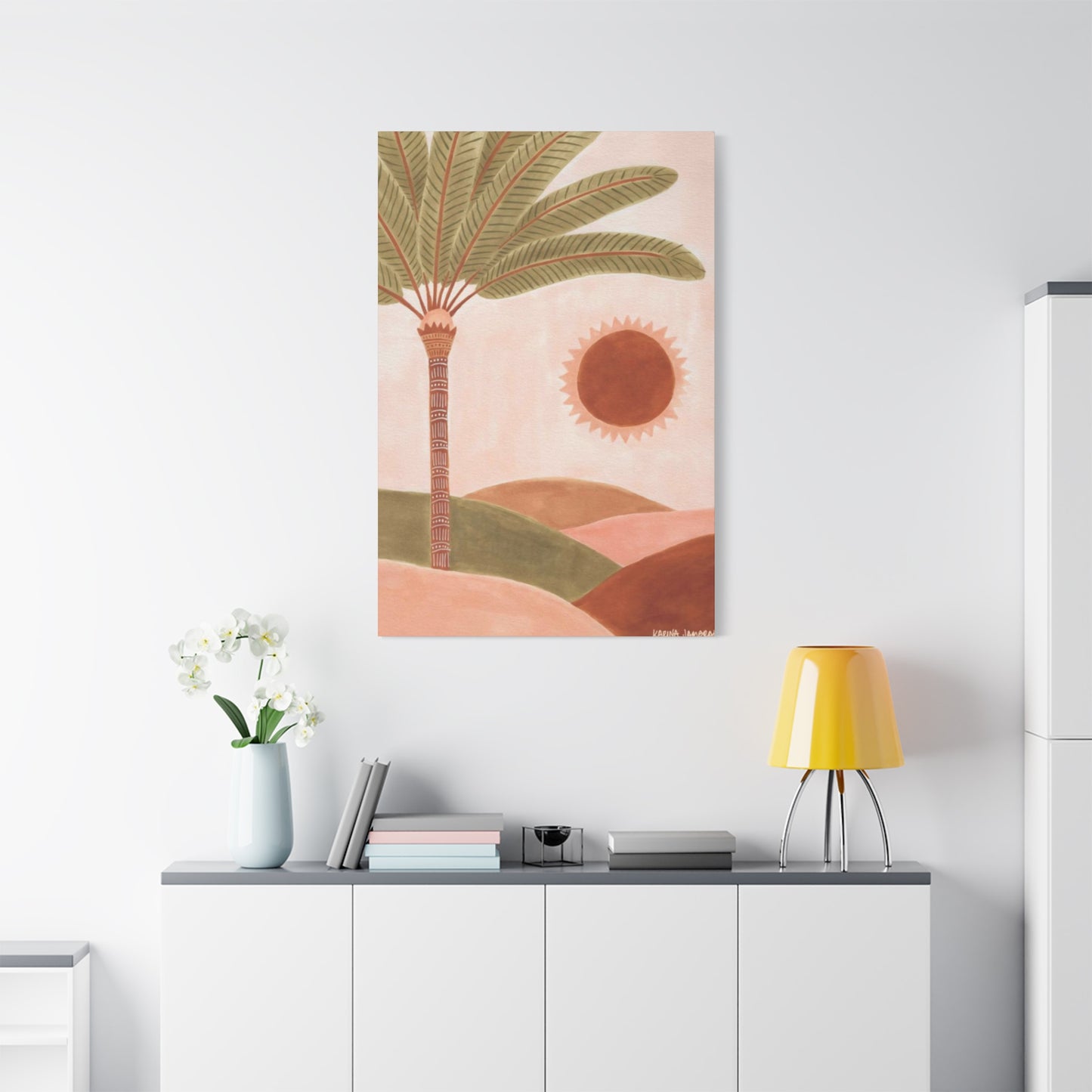Moroccan Palm Tree Wall Art: A Complete Journey Through Desert Elegance and Exotic Home Decor
The magical allure of Moroccan palm tree wall art has captured the hearts of interior design enthusiasts worldwide. This distinctive artistic style combines the natural beauty of desert palms with the rich cultural heritage of North African aesthetics. When you introduce Moroccan palm tree wall art into your living space, you're not merely adding decoration; you're inviting an entire narrative of exotic landscapes, ancient traditions, and timeless elegance into your home.
The palm tree holds profound significance in Moroccan culture, representing resilience, prosperity, and life itself in the harsh desert environment. These majestic trees have stood as silent witnesses to centuries of human civilization, providing shade, sustenance, and inspiration to generations of artists and craftspeople. The artistic representation of these botanical wonders in wall art captures their essence while translating their beauty into various mediums suitable for contemporary homes.
Moroccan palm tree wall art encompasses a diverse range of styles, from minimalist line drawings to elaborate mixed-media compositions. The versatility of this artistic theme allows it to complement various interior design schemes, whether you're cultivating a bohemian sanctuary, a modern minimalist retreat, or a traditional ethnic-inspired space. The organic silhouettes of palm fronds against desert skies create visual interest without overwhelming your existing decor elements.
The color palette typically associated with Moroccan palm tree wall art draws inspiration from the natural environment of North Africa. Warm terracotta tones, sun-bleached beiges, deep ochres, and dusty roses often form the foundation of these artworks. However, contemporary interpretations also incorporate cooler tones like turquoise, reminiscent of traditional Moroccan tiles, or dramatic blacks and golds for a more luxurious aesthetic. This chromatic flexibility ensures that you can find or create pieces that harmonize perfectly with your existing color scheme.
Historical Significance of Palm Trees in Moroccan Culture
The relationship between Moroccan people and palm trees extends back thousands of years, forming an integral part of the region's identity and survival. In ancient times, palm trees were considered sacred gifts from the gods, providing essential resources in an otherwise unforgiving landscape. The date palm, in particular, offered not just food but also materials for construction, weaving, and fuel. This deep connection between human civilization and these remarkable plants naturally evolved into artistic expression.
Throughout Moroccan history, artists have depicted palm trees in various forms of creative output. From intricate tile work adorning palace walls to textile patterns woven into traditional carpets, the palm motif appears consistently across centuries of artistic production. These representations served multiple purposes: decorative embellishment, symbolic communication, and cultural preservation. The palm tree became a visual shorthand for concepts like endurance, abundance, and divine blessing.
Traditional Moroccan architecture frequently incorporated palm imagery into its decorative schemes. Carved wooden doors, painted ceiling beams, and mosaic courtyards all featured stylized palm representations. These artistic choices weren't merely aesthetic; they carried deeper meanings related to protection, prosperity, and spiritual well-being. When contemporary artists create Moroccan palm tree wall art, they're participating in this ancient tradition while adapting it for modern contexts and sensibilities.
The symbolism of palm trees in Moroccan culture also connects to concepts of hospitality and welcome. Oases dotted with palms represented safety and refreshment for weary travelers crossing the desert. This association made palm imagery particularly appropriate for entryways and gathering spaces within homes. Today's Moroccan palm tree wall art continues this tradition, creating welcoming atmospheres that encourage relaxation and social connection.
Different Styles and Artistic Interpretations
The world of Moroccan palm tree wall art offers remarkable stylistic diversity, ensuring that every aesthetic preference can find suitable expression. Traditional interpretations often feature highly stylized palm forms with geometric precision, reflecting the mathematical principles inherent in Islamic art. These pieces typically employ symmetry, repetition, and pattern to create visually harmonious compositions that satisfy both the eye and the intellect.
Contemporary Moroccan palm tree wall art embraces more experimental approaches. Abstract representations might reduce the palm to its essential forms, using bold brushstrokes or minimalist line work to suggest rather than literally depict the tree. These modern interpretations appeal to collectors who appreciate artistic innovation while maintaining connection to cultural roots. The abstraction allows for personal interpretation, inviting viewers to engage more actively with the artwork.
Photographic Moroccan palm tree wall art captures the authentic beauty of actual palm groves and desert landscapes. These pieces often showcase dramatic lighting conditions, such as golden hour illumination or stark midday contrast, that emphasize the sculptural qualities of palm forms. Photography brings documentary realism to wall art, offering windows into actual Moroccan environments that transport viewers to distant places.
Mixed-media approaches combine various materials and techniques to create textured, dimensional Moroccan palm tree wall art. Artists might incorporate metallic leaf, fabric collage, sand, or three-dimensional elements that project from the surface. These tactile pieces engage multiple senses and create dynamic interactions with changing light conditions throughout the day. The physicality of mixed-media work adds depth and interest that purely two-dimensional pieces cannot achieve.
Color Palettes That Define Moroccan Aesthetic
The color vocabulary of Moroccan palm tree wall art draws extensively from the natural environment of North Africa. Desert sands provide a spectrum of neutral tones ranging from pale cream to deep umber. These earth tones create grounding, calming effects in interior spaces while evoking the expansive landscapes where palm trees thrive. The warmth of these colors contributes to cozy, inviting atmospheres that encourage relaxation and comfort.
Terracotta and clay tones feature prominently in traditional Moroccan color schemes and naturally extend into palm tree wall art. These reddish-brown hues reference the adobe architecture, pottery, and soil of Morocco. When incorporated into artwork, these colors create visual warmth and connection to artisanal traditions. They pair beautifully with natural materials like wood and leather, enhancing the organic aesthetic that Moroccan palm tree wall art promotes.
The brilliant blues associated with Moroccan design originate from several sources: the vibrant tiles adorning historical buildings, the Mediterranean and Atlantic waters bordering the country, and the cloudless desert skies. In Moroccan palm tree wall art, these blues provide dramatic contrast to warm earth tones, creating visual excitement and balance. The juxtaposition of cool blues against warm backgrounds mimics the natural phenomenon of palm oases against arid surroundings.
Metallic accents, particularly gold and copper, add luxurious dimension to Moroccan palm tree wall art. These reflective elements catch and play with light, creating dynamic visual experiences that change with viewing angle and illumination. The use of metallics connects to Morocco's rich history of metalworking craftsmanship and adds contemporary glamour to traditional motifs. Gold leaf details can transform simple palm silhouettes into statement pieces worthy of focal wall status.
Canvas Art: The Popular Medium for Palm Tree Imagery
Canvas remains the most popular medium for Moroccan palm tree wall art due to its versatility, durability, and artistic tradition. The texture of canvas provides an ideal surface for various painting techniques, from smooth gradations to impasto texture. Artists can build layers of color and detail that create depth and visual interest. The fabric's slight give and natural weave contribute subtle character that enhances the organic nature of palm tree subjects.
Stretched canvas pieces offer ready-to-hang convenience that appeals to contemporary consumers. These gallery-wrapped formats eliminate the need for traditional framing, creating clean, modern presentations that suit minimalist and contemporary interiors. The wrapped edges can be painted to continue the image or left as complementary solid colors, offering additional customization options. This format has become the standard for affordable, accessible art that maintains professional quality.
Canvas prints provide cost-effective alternatives to original paintings while maintaining impressive visual quality. Modern printing technology reproduces colors with remarkable accuracy and creates archival-quality pieces that resist fading and degradation. For consumers seeking Moroccan palm tree wall art on budget-friendly terms, high-quality canvas prints offer excellent value. They make it possible to acquire multiple pieces or larger-scale works without significant financial investment.
Textured canvas treatments can mimic the appearance of original paintings, adding perceived value and artistic authenticity. Gel mediums applied over printed canvases create dimensional brushstroke effects that engage touch as well as sight. These enhanced prints occupy a middle ground between standard reproductions and original artwork, offering some of the presence and impact of hand-painted pieces at more accessible price points.
Metal Wall Art: Contemporary Moroccan Palm Designs
Metal wall art represents a contemporary evolution in Moroccan palm tree imagery, bringing industrial materials into conversation with organic subjects. The inherent contrast between rigid metal and flowing palm forms creates visual tension that engages viewers. Metal's reflective properties interact dynamically with ambient light, causing the artwork to transform throughout the day as illumination shifts. This living quality makes metal pieces particularly compelling choices for spaces viewed at different times.
Laser-cut metal Moroccan palm tree wall art achieves remarkable precision and delicate detail. The technology allows for intricate negative space designs where the palm form emerges from carefully removed material. These silhouette-style pieces create dramatic shadow effects when properly lit, essentially providing two artworks in one: the physical metal form and its projected shadow. The play between positive and negative space demonstrates sophisticated design thinking.
Oxidized and patinated metal finishes add age and character to Moroccan palm tree wall art. Controlled corrosion processes create varied colorations, from verdigris greens to rust oranges, that harmonize naturally with Moroccan color palettes. These weathered appearances suggest antiquity and authenticity, connecting contemporary pieces to long artistic traditions. The uniqueness of each patina ensures that no two pieces are identical, offering collectors true one-of-a-kind artworks.
Three-dimensional metal sculptures that mount to walls provide maximum visual impact and architectural presence. These pieces project significantly from the wall surface, creating dramatic shadows and sculptural interest. The dimensional quality makes them function as both wall art and quasi-sculpture, bridging categories in ways that enrich interior environments. For large spaces with high ceilings, oversized metal palm tree installations create commanding focal points.
Wood and Natural Materials in Palm Tree Art
Wooden Moroccan palm tree wall art celebrates the organic connection between artistic medium and subject matter. The natural grain patterns, color variations, and textural qualities of wood complement palm imagery perfectly, creating harmonious relationships between form and material. Reclaimed wood pieces carry additional narrative weight, bringing histories and patinas that add depth and character. The sustainability aspect of repurposed wood also appeals to environmentally conscious consumers.
Carved wooden palm tree reliefs showcase traditional woodworking skills while creating tactile, dimensional art pieces. The physical manipulation of material to create form connects contemporary work to centuries of Moroccan woodcarving tradition. These pieces invite touch and close examination, rewarding viewers who engage carefully with details and craftsmanship. The play of light across carved surfaces creates constantly changing visual experiences as illumination shifts.
Wood burning techniques, known as pyrography, offer another approach to creating Moroccan palm tree wall art. The controlled burning creates permanent, detailed images directly into wood surfaces without paint or stain. The monochromatic nature of pyrography emphasizes line, form, and composition, resulting in elegant, minimalist pieces. The slight dimensional quality where wood has been burned adds subtle texture that standard printing cannot replicate.
Mixed-material pieces incorporating wood with metal, fabric, or found objects create eclectic Moroccan palm tree wall art with contemporary edge. These assemblage-style works demonstrate creativity and innovation while maintaining connection to palm tree themes. The combination of different materials adds visual complexity and textural interest, preventing monotony and encouraging extended viewing. Such pieces work particularly well in bohemian or eclectic interior design schemes.
Textile Art: Woven and Fabric Palm Tree Designs
Textile-based Moroccan palm tree wall art connects to Morocco's rich tradition of weaving, embroidery, and fabric arts. Tapestries featuring palm motifs bring softness and warmth to interiors, providing acoustic benefits along with visual appeal. The fabric medium allows for rich color saturation and intricate pattern work that references traditional Moroccan textiles like kilims and boucherouite rugs. These pieces add layers of cultural authenticity to space.
Embroidered palm tree wall hangings showcase exceptional craftsmanship and attention to detail. The dimensional quality of raised stitching creates textural interest that flat media cannot achieve. Traditional Moroccan embroidery techniques, passed through generations, lend authentic cultural character to contemporary palm tree designs. The time-intensive nature of embroidery also imbues pieces with value derived from human labor and skill.
Macramé palm tree wall art represents a contemporary revival of knotting traditions. The natural fibers used in macramé work harmonize perfectly with palm tree subjects, creating cohesive organic presentations. The textural, three-dimensional nature of macramé adds bohemian character to spaces while maintaining sophisticated aesthetic appeal. These handcrafted pieces offer uniqueness that mass-produced items cannot replicate.
Batik and hand-dyed fabric art featuring palm tree imagery brings vibrant color and artistic spontaneity to wall décor. The wax-resist dyeing process creates organic color transitions and patterns that complement the natural forms of palm trees. Each piece carries unique characteristics determined by the hand-dyeing process, ensuring that no two works are identical. This medium allows for bold, saturated colors that make powerful visual statements.
The Role of Calligraphy in Moroccan Palm Tree Art
Islamic calligraphy frequently appears in Moroccan palm tree wall art, combining visual beauty with spiritual or poetic meaning. The flowing, organic forms of Arabic script harmonize naturally with palm frond curves, creating unified compositions. Calligraphic elements might include Quranic verses, traditional blessings, or poetry celebrating nature and divine creation. This combination of image and text adds layers of meaning that reward contemplation.
The integration of calligraphy transforms purely decorative Moroccan palm tree wall art into meaningful statements of faith, culture, or philosophical perspective. For Muslim collectors, pieces incorporating sacred text serve dual purposes as both aesthetic objects and spiritual reminders. The visual beauty of Arabic calligraphy appeals even to those who cannot read the language, functioning as abstract design elements while carrying specific meanings for those who can translate.
Contemporary artists experiment with calligraphic forms in innovative ways, sometimes abstracting letters to the point where they become purely decorative patterns. This approach maintains visual connection to Islamic artistic tradition while creating accessible, universal appeal. The tension between legibility and abstraction invites viewers to look more carefully, discovering hidden meanings within apparent decoration.
Gilded calligraphy combined with palm tree imagery creates luxurious Moroccan wall art suitable for formal spaces. The application of gold leaf to calligraphic elements elevates the perceived value and importance of the text. This treatment references illuminated manuscripts and palace decoration, bringing regal elegance into domestic settings. The reflective quality of gold creates dynamic interactions with light that enhance visual interest.
Size Considerations for Different Spaces
Selecting appropriately sized Moroccan palm tree wall art requires careful consideration of room dimensions and viewing distances. Oversized pieces create dramatic impact in large spaces with high ceilings, where smaller artworks would appear insignificant. Gallery walls or entryways particularly benefit from statement pieces that immediately capture attention. A single large canvas or metal installation can anchor an entire room design, providing a clear focal point around which other elements arrange themselves.
Medium-sized Moroccan palm tree wall art works well above furniture pieces like sofas, beds, or console tables. The artwork should generally span about two-thirds to three-quarters of the furniture width to maintain visual proportion. This size range offers flexibility for various room types while providing sufficient presence to register as intentional design choices rather than afterthoughts. Multiple medium pieces can be grouped to create gallery wall arrangements.
Small Moroccan palm tree wall art pieces find homes in intimate spaces, gallery wall collections, or as accent additions to existing art arrangements. These modest-scale works suit powder rooms, hallways, home offices, or reading nooks where viewing occurs at close range. The smaller format allows for affordable experimentation with Moroccan aesthetic without major commitment. Collections of small pieces create visual interest through repetition and variation.
Vertical versus horizontal orientation significantly affects how Moroccan palm tree wall art interacts with architectural features. Tall, vertical pieces emphasize ceiling height and work well in narrow spaces or flanking doorways. Horizontal panoramic formats complement wide wall expanses and work particularly well above horizontal furniture arrangements. The natural upward growth of palm trees makes vertical orientations intuitive choices, though artistic cropping can create effective horizontal compositions.
Placement Strategies for Maximum Impact
Strategic placement of Moroccan palm tree wall art begins with identifying focal walls that naturally draw attention upon entering rooms. These primary walls might face doorways, anchor seating arrangements, or feature architectural interest like fireplaces. Placing your most impressive palm tree artwork on focal walls ensures maximum visibility and impact. The art becomes an integral part of the room's identity rather than peripheral decoration.
Creating gallery walls with multiple Moroccan palm tree wall art pieces allows for personal curation and dynamic compositions. This approach works particularly well for collections featuring varied sizes, styles, or color treatments. The arrangement process itself becomes a creative act, with spacing, alignment, and grouping decisions affecting overall impression. Gallery walls tell visual stories and demonstrate collecting sophistication when executed thoughtfully.
Symmetrical placement of paired Moroccan palm tree wall art pieces flanking architectural features creates formal, balanced compositions. This traditional approach suits classic interior design styles and provides visual order. Matching or complementary palm tree artworks on either side of windows, mirrors, or doorways emphasize symmetry and architectural rhythm. The predictability of symmetrical arrangements creates calm, orderly impressions.
Asymmetrical placement strategies offer more contemporary, dynamic alternatives to traditional centered arrangements. Placing Moroccan palm tree wall art off-center or at unexpected heights creates visual tension and interest. This approach requires confident design sensibility but rewards risk with sophisticated, editorial results. Asymmetry works particularly well in modern or eclectic interiors where breaking conventional rules enhances rather than disrupts overall aesthetic.
Color Coordination with Existing Decor
Harmonizing Moroccan palm tree wall art with existing color schemes ensures cohesive, professional-looking results. Analogous color relationships, using hues adjacent on the color wheel, create gentle, flowing transitions between artwork and surroundings. For example, pairing warm terracotta palm tree art with orange or gold décor elements establishes harmonious warmth. This approach feels natural and unforced, appropriate for relaxing spaces.
Complementary color strategies place Moroccan palm tree wall art in colors opposite existing décor on the color wheel, creating vibrant contrast and visual excitement. Blue palm tree artwork against orange-toned walls, or purple pieces in yellow rooms, demonstrate this high-energy approach. The tension between opposites attracts attention and creates memorable impressions. This strategy suits spaces designed for activity and social interaction.
Monochromatic approaches use Moroccan palm tree wall art in varying shades of a single color already prominent in the room. This sophisticated strategy creates depth through tonal variation while maintaining overall color unity. A room featuring beige furnishings might incorporate palm tree art ranging from cream to chocolate brown, creating visual interest without introducing new colors. Monochromatic schemes feel intentional and curated.
Neutral Moroccan palm tree wall art in blacks, whites, grays, or beiges provides flexibility to work with any color scheme. These versatile pieces allow surrounding décor to provide color interest while the artwork contributes form, texture, and subject matter. Neutral palm tree art offers longevity because it survives décor updates without requiring replacement. This practical approach appeals to those who frequently refresh their interiors.
Lighting Techniques to Enhance Palm Tree Art
Proper lighting dramatically affects how Moroccan palm tree wall art appears and impacts spaces. Natural daylight provides the most accurate color rendering and creates constantly changing illumination throughout the day. Positioning palm tree artwork to receive indirect natural light prevents fading while allowing colors to appear vibrant and true. The shifting quality of daylight adds living dimension to static artworks.
Picture lights mounted directly above Moroccan palm tree wall art create focused illumination that highlights details and creates gallery-quality presentations. These dedicated fixtures position light at optimal angles to minimize glare while maximizing visibility. The dramatic effect of direct lighting transforms artwork into genuine focal points. Picture lights work particularly well for valuable pieces or in rooms where artwork takes primary importance in the design scheme.
Track lighting systems offer flexibility to illuminate multiple Moroccan palm tree wall art pieces with adjustable fixtures. This approach suits gallery wall arrangements or rooms with several artworks requiring lighting. The ability to aim individual fixtures allows for customized illumination addressing each piece's specific needs. Modern track systems come in styles ranging from industrial to minimalist, complementing various décor aesthetics.
Ambient lighting from recessed ceiling fixtures or lamps creates overall room illumination that includes wall art without spotlighting it. This subtle approach integrates Moroccan palm tree wall art into the general environment rather than isolating it as a separate element. Ambient lighting suits casual, relaxed spaces where artwork contributes to atmosphere without demanding focused attention. This method works well in bedrooms and living rooms designed for comfort.
Creating Gallery Walls with Palm Tree Themes
Gallery wall creation using Moroccan palm tree wall art allows for personal expression through curation and arrangement. Beginning with a central anchor piece, typically the largest or most visually commanding artwork, provides a starting point around which other pieces relate. The anchor establishes the gallery's tone and should be positioned first, with remaining pieces arranged in relation to it. This approach creates hierarchy and prevents chaotic-feeling arrangements.
Maintaining consistent spacing between Moroccan palm tree wall art pieces in gallery walls creates visual order and professional appearance. A spacing of two to three inches works well for most residential applications, close enough to create unity while allowing each piece individual presence. Using a level and measuring carefully prevents the crooked alignments that undermine otherwise strong arrangements. Templates cut from paper can be positioned with removable tape before committing to nail holes.
Mixing frame styles, sizes, and orientations within Moroccan palm tree gallery walls creates dynamic, collected-over-time appearances. Combining wood, metal, and painted frames adds textural variety while maintaining connection through shared palm tree subject matter. Varying frame widths and profiles prevents monotony and demonstrates design sophistication. This eclectic approach suits bohemian and transitional interior styles particularly well.
Grid arrangements of identically sized and framed Moroccan palm tree wall art pieces create ordered, contemporary gallery walls. This systematic approach appeals to minimalist sensibilities and works beautifully in modern interiors. The repetition of palm tree imagery with slight variations in composition, color, or detail maintains interest within the structured format. Grid galleries make powerful statements through their disciplined unity.
Seasonal Styling with Moroccan Palm Tree Art
While Moroccan palm tree wall art maintains year-round relevance, seasonal styling adjustments can refresh its appearance and relationship to surrounding décor. Summer styling might emphasize the art's connection to warm weather and vacation destinations by pairing it with light, airy textiles and bright accent colors. Adding tropical plant specimens nearby reinforces the botanical theme and creates lush, resort-like atmospheres. Natural fiber accessories like jute or rattan echo the organic nature of palm subjects.
Autumn styling can highlight the warm earth tones inherent in much Moroccan palm tree wall art by surrounding it with rust, gold, and deep brown accessories. Layering cozy textiles like wool throws and velvet cushions creates seasonal contrast with the desert associations of palm imagery. This juxtaposition produces interesting visual conversations between exotic artwork and hygge-inspired comfort. Candlelight enhances warm tones and creates intimate ambiance.
Winter approaches to Moroccan palm tree wall art might play with unexpected contrasts, positioning desert imagery against cool seasonal colors or luxurious textures. Metallic accents in silver or white gold create frost-like shimmer that produces intriguing tension with warm palm tree subjects. Rich jewel tones in winter accessories provide saturated color that complements rather than competes with the artwork. The escapist quality of palm tree imagery offers particular appeal during cold months.
Spring styling naturally aligns with the life-affirming symbolism of palm trees, emphasizing growth, renewal, and natural beauty. Fresh greenery, floral arrangements, and pastel accent colors create harmonious relationships with Moroccan palm tree wall art. Opening windows to allow natural breezes and sunlight enhances the connection between interior art and exterior nature. This seasonal moment offers perfect opportunity for cleaning and minor repositioning of artwork for renewed appreciation.
Pairing Palm Tree Art with Furniture Styles
Moroccan palm tree wall art pairs beautifully with mid-century modern furniture, creating sophisticated fusion aesthetics. The clean lines and organic forms characteristic of mid-century design harmonize with simplified palm tree representations. Walnut and teak wood tones in furniture complement warm earth tones common in Moroccan art. The period's embrace of natural materials and connection to nature aligns philosophically with palm tree imagery. This combination creates timeless, collected interiors.
Bohemian and eclectic furniture arrangements provide ideal contexts for Moroccan palm tree wall art. The mix-and-match nature of boho style accommodates the exotic, travel-inspired character of palm imagery. Layered textiles, varied patterns, and globally sourced accessories create rich environments where palm tree art feels completely at home. The relaxed, personal quality of bohemian interiors matches the escapist associations of Moroccan desert imagery.
Contemporary furniture's minimalist forms and neutral color palettes allow Moroccan palm tree wall art to function as primary visual interest. The artwork provides warmth and organic character that prevents stark contemporary spaces from feeling cold or unwelcoming. The juxtaposition between sleek, manufactured furniture and natural palm subjects creates balanced interiors that feel both modern and livable. This combination suits urban dwellers seeking to introduce natural elements into contemporary apartments.
Traditional furniture can successfully pair with Moroccan palm tree wall art when color and tone are thoughtfully coordinated. Formal wood furniture in darker finishes benefits from the lightness and exotic character of palm imagery, preventing spaces from feeling heavy or dated. The artwork introduces contemporary relevance while respecting traditional furniture's classic lines. This approach suits those who appreciate traditional quality but want to avoid stuffy, overly formal atmospheres.
DIY Approaches to Creating Palm Tree Wall Art
Creating custom Moroccan palm tree wall art through do-it-yourself projects offers both cost savings and personal satisfaction. Simple silhouette paintings require only canvas, paint, and basic artistic confidence. By projecting or tracing palm tree images and filling them with solid colors or gradients, even beginners can produce striking results. The forgiving nature of palm tree forms, with their organic irregularity, means small imperfections read as natural variation rather than mistakes.
Stenciled Moroccan palm tree wall art allows for repeated pattern creation and multi-layer color application. Commercial stencils provide professional shapes, while custom stencils can be cut from cardboard or acetate for unique designs. Building up layers of color through sequential stencil applications creates depth and visual complexity. This technique works particularly well for creating coordinated sets of palm tree artwork with consistent imagery but varied color treatments.
Photo transfer techniques enable DIY creators to incorporate found palm tree images into handmade Moroccan wall art. Transferring photographs onto canvas, wood panels, or other surfaces creates aged, artistic appearances distinct from standard printing. Various transfer methods using mediums, solvents, or special papers produce different effects ranging from vintage to contemporary. This approach allows personalization using travel photographs or images with particular meaning.
Mixed-media assemblage provides endless creative possibilities for DIY Moroccan palm tree wall art. Combining fabric, paper, natural materials, found objects, and various media creates dimensional, textured pieces full of visual interest. This exploratory approach encourages artistic experimentation and produces unique results impossible to purchase commercially. The process itself offers creative fulfillment beyond the finished product's decorative function.
Incorporating Moroccan Patterns with Palm Tree Art
Geometric patterns fundamental to Moroccan design create powerful combinations when integrated with palm tree imagery. Traditional tessellations, star patterns, and interlocking shapes can frame, background, or overlay palm tree subjects. The mathematical precision of geometric patterns provides visual counterpoint to organic palm forms, creating balanced compositions. This integration directly references authentic Moroccan decorative arts, enhancing cultural authenticity.
Zellige tilework patterns, created from small geometric mosaic pieces, inspire contemporary Moroccan palm tree wall art designs. Artists might depict palm trees composed of tessellating tile-like shapes or surround realistic palm imagery with pattern borders. The jewel-like quality of zellige color combinations adds richness and visual luxury. This approach celebrates Moroccan craftsmanship traditions while creating contemporary artwork.
Arabesque patterns featuring flowing, vegetal motifs naturally complement palm tree subjects in Moroccan wall art. The curvilinear, organic nature of arabesque scrollwork echoes palm frond curves, creating harmonious relationships. Traditional arabesque patterns might form decorative borders or background elements that enhance without overwhelming palm tree focal points. This combination demonstrates sophisticated understanding of Islamic artistic principles.
Contemporary pattern mixing approaches combine Moroccan geometric and organic patterns in unexpected ways. Stripes, dots, or modern graphic patterns might intersect with traditional Moroccan motifs and palm tree imagery, creating fusion aesthetics. This bold approach suits eclectic and maximalist interiors where pattern-on-pattern creates energetic, personality-filled spaces. The key to success lies in maintaining color coordination that unifies diverse pattern types.
Desert Imagery in Home Decor
Desert imagery in Moroccan palm tree wall art evokes powerful psychological responses related to escape, adventure, and exotic romance. For many viewers, palm trees trigger associations with travel, vacation, and freedom from daily routines. These positive connections create uplift and possibility within domestic spaces. The aspirational quality of desert scenes can motivate and inspire, serving as visual reminders of broader horizons beyond immediate circumstances.
The minimalism inherent in desert landscapes provides psychological relief from contemporary visual clutter. Scenes featuring solitary palms against vast skies or simple dunes create breathing room for overstimulated minds. This stripped-down aesthetic promotes mental clarity and calm, counteracting the chaos of modern life. The spaciousness of desert imagery encourages meditation and introspection, making Moroccan palm tree wall art particularly suitable for rest and reflection spaces.
Warm earth tones dominant in desert-inspired Moroccan palm tree wall art generate feelings of security, comfort, and grounding. Color psychology identifies browns, tans, and ochres as stable, reliable colors that promote feelings of safety. These hues create cozy, welcoming environments that encourage relaxation. The warmth of desert colors also stimulates sociability, making such artwork appropriate for gathering spaces where hospitality matters.
The resilience symbolized by palm trees surviving harsh desert conditions inspires psychological strength in viewers. These hardy plants represent perseverance, adaptability, and thriving against odds. For individuals facing challenges, Moroccan palm tree wall art can serve as visual encouragement and reminder of inner strength. The symbolic dimension adds meaning that transcends pure decoration, making the artwork emotionally significant.
Cultural Authenticity and Artistic Appropriation
When selecting or creating Moroccan palm tree wall art, considerations of cultural respect and authenticity deserve attention. Authentic Moroccan art reflects centuries of tradition, religious influence, and social context that superficial imitation cannot capture. Seeking works by Moroccan artists or those deeply knowledgeable about North African culture ensures genuine representation rather than cartoonish stereotype. This approach supports authentic cultural exchange and economic benefit to source communities.
The line between cultural appreciation and appropriation requires careful navigation when engaging with Moroccan artistic traditions. Appreciation involves respectful learning, acknowledgment of sources, and economic support of originating cultures. Appropriation extracts aesthetic elements while divorcing them from context, history, and makers. Consumers can practice appreciation by educating themselves about Moroccan art history, purchasing from appropriate sources, and recognizing the cultural significance behind decorative choices.
Contemporary artists of diverse backgrounds legitimately engage with Moroccan themes when doing so thoughtfully and respectfully. Artistic exchange and cross-cultural influence have always enriched human creativity. The key distinguishing factor involves whether work demonstrates genuine engagement with Moroccan culture or merely surfaces exotic aesthetics for commercial purposes. Transparent artistic intent and visible respect for source material characterize ethical cross-cultural artistic practice.
Educational context accompanying Moroccan palm tree wall art enhances appreciation and understanding. Gallery descriptions, artist statements, or personal research into Islamic art principles and Moroccan history deepen engagement beyond surface aesthetics. This knowledge transforms decoration into cultural dialogue, enriching both artwork and viewer. The effort invested in understanding creates more meaningful relationships with artistic objects and the cultures that inspire them.
Caring for and Maintaining Your Wall Art
Proper maintenance extends the life and beauty of Moroccan palm tree wall art regardless of medium. Canvas pieces benefit from regular dusting with soft, dry cloths or gentle vacuum brush attachments. Avoid cleaning products containing moisture or chemicals that might damage paint or canvas fibers. Direct sunlight exposure should be minimized to prevent color fading, particularly for pieces featuring vibrant or delicate pigments. Rotating artwork seasonally distributes light exposure evenly if complete sunlight avoidance proves impossible.
Metal Moroccan palm tree wall art requires different care approaches depending on finish and material. Sealed or painted metal can be gently wiped with damp cloths to remove dust and debris. Raw or intentionally oxidized metal may require special metal cleaners or oils to maintain desired patina while preventing unwanted corrosion. Check manufacturer recommendations for specific care instructions, as inappropriate cleaning might damage deliberate finish effects.
Wooden palm tree wall art benefits from occasional treatment with appropriate wood oils or conditioners that prevent drying and cracking. Avoid placing wood pieces in extremely humid or dry environments, as dramatic moisture fluctuations cause warping and splitting. Dust regularly with soft cloths, and address any pest concerns immediately to prevent damage. Natural wood's living quality requires more attentive care than inert materials but rewards diligence with developing character.
Textile-based Moroccan palm tree wall art demands gentle handling and climate control to prevent degradation. Vacuum carefully using low suction and soft attachments to remove dust without stressing fibers. Avoid hanging fabric art in direct sunlight, which causes fading and fiber breakdown. Humid environments encourage mold growth, while excessive dryness makes fibers brittle. Professional textile conservation cleaning may be necessary for valuable or delicate pieces showing signs of soiling or damage.
Budget-Friendly Options for Acquiring Palm Tree Art
Affordable Moroccan palm tree wall art options exist for every budget without requiring aesthetic compromise. Digital printing technology has democratized art access, enabling high-quality reproductions at accessible price points. Online marketplaces and print-on-demand services offer thousands of palm tree designs in various sizes and formats. These platforms often allow customization of colors and dimensions, providing personalization without custom pricing.
DIY creation represents the most budget-conscious approach to Moroccan palm tree wall art, requiring only materials and time investment. Simple painted canvases using inexpensive craft paints produce effective results when executed with care. Printable art downloads available for minimal cost can be printed at office supply stores and framed with thrift store finds. The sweat equity invested in handmade pieces often increases their personal value beyond purely financial considerations.
Thrift stores, estate sales, and online secondhand marketplaces occasionally yield Moroccan palm tree wall art treasures at fraction-of-retail prices. Patient hunting rewards bargain seekers with unique finds that cost mere dollars. Even damaged pieces can be rehabilitated with minor restoration work or creative reframing. The sustainable practice of buying secondhand reduces environmental impact while stretching decorating budgets further.
Student and emerging artist works offer opportunities to acquire original Moroccan palm tree wall art at accessible prices while supporting developing creative careers. Art schools, local galleries, and online platforms showcase new talent creating exciting work without established artist premium pricing. Purchasing from emerging artists provides affordable originals while investing in artistic careers. The piece may even appreciate in value as the artist's reputation grows.
Luxury and Investment-Grade Palm Tree Artwork
High-end Moroccan palm tree wall art represents the pinnacle of artistic sophistication and cultural heritage. Positioned in the luxury art market, these pieces go far beyond decorative purposes—they embody exclusivity, craftsmanship, and long-term value. Created by established artists with distinguished exhibition histories, academic training, and critical acclaim, such artworks often come as original pieces or limited-edition prints, ensuring rarity and authenticity. Collectors and interior connoisseurs alike seek these works for their ability to merge exotic aesthetics with solid investment potential.
Each artwork in this category reflects the serene yet majestic essence of palm trees, a timeless symbol of resilience, prosperity, and spiritual peace within Moroccan culture. Artists often employ premium materials such as archival-grade canvas, natural pigments, and handcrafted frames to enhance durability and prestige. This meticulous attention to detail ensures that every piece not only beautifies an interior but also stands as a testament to enduring artistic value.
From a financial perspective, investment-grade palm tree art serves as a tangible asset class with growing demand among collectors worldwide. As global interest in Moroccan and North African art continues to expand, these works often experience value appreciation, particularly those connected to recognized artists or reputable galleries. Art investors are drawn to the balance between emotional gratification and monetary potential—each acquisition functioning as both a personal statement and a calculated investment.
Displaying a luxury Moroccan palm tree artwork within a living space, hotel, or gallery instantly evokes an aura of refinement and cultural depth. Beyond its lush visual appeal, it connects viewers to centuries of artistic tradition and the timeless beauty of nature. In essence, investment-grade palm tree art transcends decoration, becoming a legacy piece that celebrates heritage, artistry, and enduring value.
Conclusion
Moroccan Palm Tree Wall Art: A Complete Journey Through Desert Elegance and Exotic Home Décor celebrates the harmonious fusion of culture, craftsmanship, and nature. This art form captures more than the visual beauty of palm trees—it embodies the soul of Moroccan aesthetics, where geometry, symbolism, and organic form unite to create a timeless expression of serenity and sophistication. Through intricate design and warm color palettes, Moroccan palm tree wall art bridges the tranquil energy of the desert with the refined elegance of interior artistry, transforming any space into a sanctuary of exotic charm.
Palm trees have always held profound significance in Moroccan culture and desert life. They represent endurance, grace, and life’s continuity in the face of vast arid landscapes. When interpreted through Moroccan art, the palm motif evolves beyond a simple natural element; it becomes a symbol of spiritual resilience and balance. Whether presented in traditional mosaics, hand-painted canvases, or modern photographic prints, the palm tree reflects the delicate intersection between nature and design that defines Moroccan artistic philosophy.
The beauty of Moroccan palm tree wall art lies in its versatility. Its patterns and forms can enhance interiors of nearly every style—from contemporary minimalist apartments to rustic bohemian villas. When paired with textured walls, rattan furnishings, or earthen tones, the artwork evokes the tranquil aura of desert landscapes. Its visual language, rich in earthy hues, golds, and soft greens, creates a grounded yet luxurious atmosphere. Whether as a large-scale centerpiece or a subtle accent, it adds both structure and fluidity to a room’s design narrative.
This art style also embodies the Moroccan mastery of geometry and rhythm. Traditional artisans often infuse palm-inspired motifs into zellige tiles, wooden carvings, and woven tapestries, demonstrating how repetition and balance can create visual poetry. In wall art, these elements are reimagined through modern mediums—metallic textures, minimalist outlines, or vibrant digital compositions—allowing homeowners to experience desert artistry in new, contemporary ways. The geometric balance and organic curves of the palm complement the structured chaos of Moroccan design, resulting in interiors that feel both composed and alive.
Lighting plays a crucial role in showcasing the elegance of Moroccan palm art. The interplay of natural and artificial light highlights the textures and shadows that define these works. When illuminated by lanterns, candles, or warm LED fixtures, the artwork transforms, radiating a golden glow reminiscent of a Moroccan sunset over the dunes. This ambient light deepens the sense of tranquility, making the artwork not just a decoration, but an experience—one that captures the stillness and majesty of the desert.
Moroccan palm tree wall art also resonates deeply with the modern desire to blend cultural authenticity with contemporary sophistication. Today’s interior design trends increasingly value pieces that tell stories—art that speaks of history, place, and emotion. The palm tree, in its Moroccan interpretation, tells a story of life sustained by beauty and resilience. It stands as a visual metaphor for balance—between simplicity and detail, tradition and innovation, nature and structure.
Integrating Moroccan palm art into your home invites both visual and emotional transformation. In a living room, it becomes a conversation starter—a bridge between modern design and ancestral artistry. In bedrooms, its soothing motifs bring calm and grounding energy, while in entryways or hallways, it sets an exotic and inviting tone. Pairing this artwork with materials such as brass, terracotta, or natural linen enhances its authenticity and tactile richness. For a more contemporary twist, sleek black frames or metallic accents can modernize the piece without losing its traditional warmth.
Beyond aesthetic appeal, Moroccan palm tree wall art evokes mindfulness and harmony. The repeated leaf motifs and symmetrical compositions draw the eye inward, offering moments of quiet reflection. They encourage viewers to slow down, to reconnect with the earth’s rhythm, and to appreciate the enduring beauty of the natural world. In this sense, the artwork transcends decoration—it becomes a meditative focal point, infusing the home with a sense of purpose and peace.
As global appreciation for Moroccan design continues to grow, so does the relevance of palm-inspired art in modern interiors. It exemplifies a universal longing for connection—connection to culture, to the environment, and to one’s inner calm. Whether chosen for its symbolism, texture, or aesthetic grace, each piece carries the essence of Moroccan heritage, distilled into a contemporary visual experience that resonates across time and style.

















